Part 45: March 17 Broadcast

You are listening to BBC radio 4. In an hour, there will be live coverage of the London symphony orchestra performing the music of Richard Wagner. For the next hour, Professor David Stephenson will be presenting a documentary on the second 80 years war of the eighteenth century. This series will be running every third day, up to 50 episodes. If you want news of the current war in the Middle East please channel in to BBC radio 1.
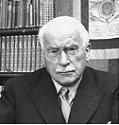 Good evening, and welcome to BBC radio 4. I’m Professor David Stephenson, professor of Dutch historical studies at Cambridge. This is the forty fifth part of our 50 episode special on the second 80 years war over Europe. Joining me for these broadcasts are fellow researchers and scholars Doctor Albert Andrews, specialist in German studies from the Berlin academy, Professor Robert Lowe, specialist in French studies at Cambridge, and a graduate student and technical assistant, Anton Thatcher. Last episode, we discussed the final capture of Britain, and what it meant for the men in power in Amsterdam.
Good evening, and welcome to BBC radio 4. I’m Professor David Stephenson, professor of Dutch historical studies at Cambridge. This is the forty fifth part of our 50 episode special on the second 80 years war over Europe. Joining me for these broadcasts are fellow researchers and scholars Doctor Albert Andrews, specialist in German studies from the Berlin academy, Professor Robert Lowe, specialist in French studies at Cambridge, and a graduate student and technical assistant, Anton Thatcher. Last episode, we discussed the final capture of Britain, and what it meant for the men in power in Amsterdam. The new and victorious Republican party had seemed invincible in the most recent election, and in control over the entirety of Western Europe, they could set about to preparing to move their forces back east to defeat the Polish crusaders.
The new and victorious Republican party had seemed invincible in the most recent election, and in control over the entirety of Western Europe, they could set about to preparing to move their forces back east to defeat the Polish crusaders.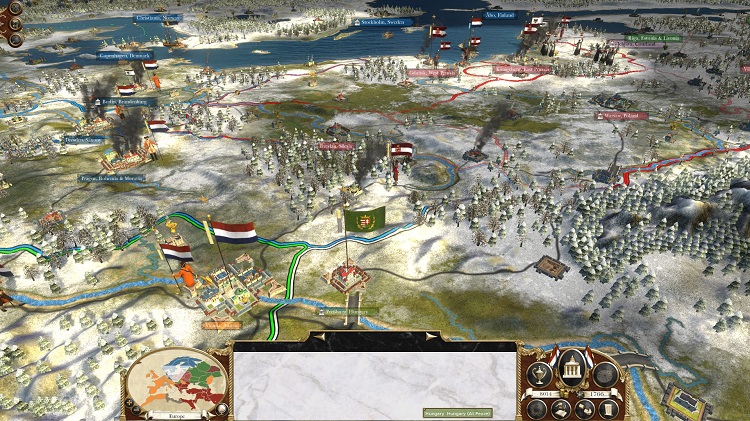
The Polish crusaders were still an important threat to the Dutch in the East, and so the Dutch made sure to keep their Prussian buffer zone occupied with troops.
 For the time being, they had set about defending the Prussian holdings, knowing the Prussians required more time to recruit men. One suitable garrisoned, the Dutch could return to their own territories and let the Prussians fight it out with the Polish Empire. With any luck, if the Polish were forced to fight for another half century, the will to fight would dissolve, and the religious furor would end. Other crusades had ended in such a manner.
For the time being, they had set about defending the Prussian holdings, knowing the Prussians required more time to recruit men. One suitable garrisoned, the Dutch could return to their own territories and let the Prussians fight it out with the Polish Empire. With any luck, if the Polish were forced to fight for another half century, the will to fight would dissolve, and the religious furor would end. Other crusades had ended in such a manner.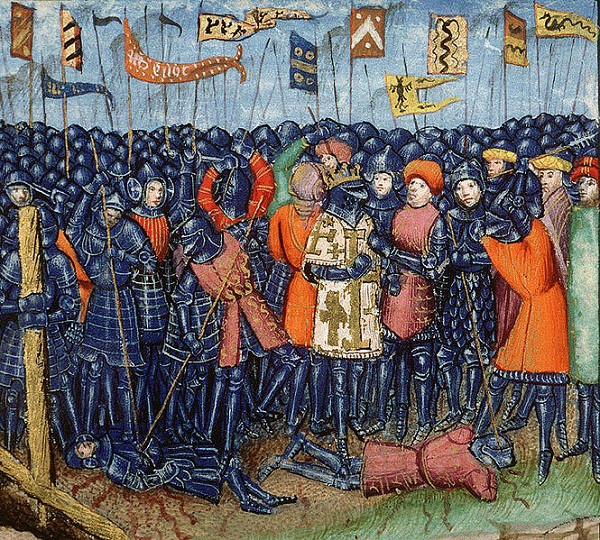
Despite the eager nature of the crusaders, as the reality of war dawned on them, and on Richard the Lionheart, continuing the war seemed less than pleasant forcing the crusaders and the Saracens to the negotiation table.
 Poland was also finding themselves encroached upon by armies from the South. Ottoman forces which had passed through the once again free Hungary had managed to make their way into the Polish territory, but at the same time, the Polish managed to sack Serbia before a counter assault from the Ottomans stabilized the front. The terrible battles in the Middle East, even in the 1700s would be indicative of the lack of stability in the region which has lasted, as you know, until today.
Poland was also finding themselves encroached upon by armies from the South. Ottoman forces which had passed through the once again free Hungary had managed to make their way into the Polish territory, but at the same time, the Polish managed to sack Serbia before a counter assault from the Ottomans stabilized the front. The terrible battles in the Middle East, even in the 1700s would be indicative of the lack of stability in the region which has lasted, as you know, until today.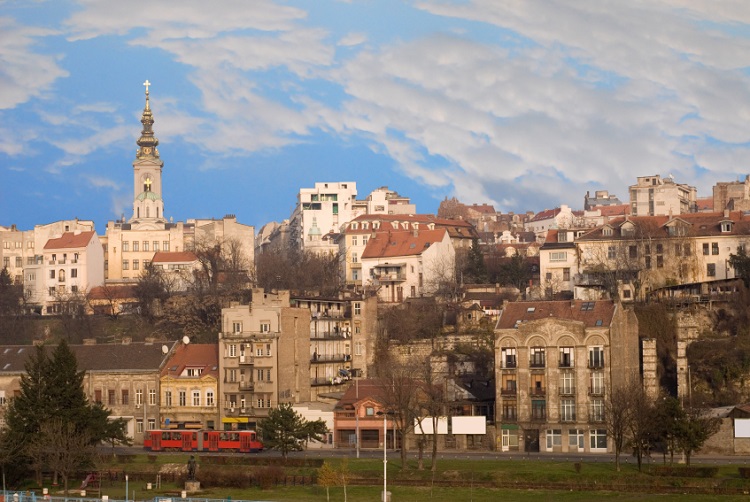
Serbia was a focal point of conflict, and next to Hungary, it would exchange hands more often than any other country. For as long as the people of Serbia can remember, racial prejudice and old grudges have lead to violent conflict.
 Twice, Polish forces attempted to cross the river Danube river towards the exposed inlands, hoping a breakthrough behind the main line stretching from the Baltic to the Mediterranean would disrupt the Dutch and force them into losing territory and men as they tried to chase down their forces. However, both times, a Dutch emplacement managed to catch them along the river crossing.
Twice, Polish forces attempted to cross the river Danube river towards the exposed inlands, hoping a breakthrough behind the main line stretching from the Baltic to the Mediterranean would disrupt the Dutch and force them into losing territory and men as they tried to chase down their forces. However, both times, a Dutch emplacement managed to catch them along the river crossing.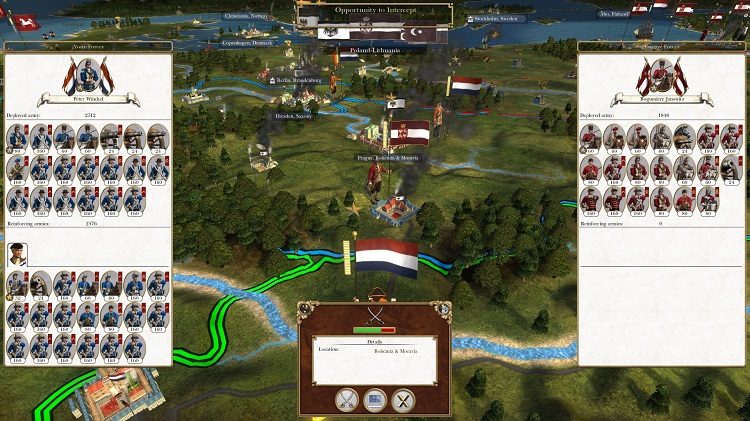
The Polish army trying to make it past the Dutch defenses to strike at their heartlands. They would have been surprised to learn that the Dutch were well garrisoned all through Germany.
 After running down the remaining men from Munich assault around the main road towards Prague, the Dutch decided to maintain a permanent garrison near the river crossing, expanding the garrison to several thousand men. At a natural fortification such as a river, the Dutch could defend adequately without having to build more fortresses.
After running down the remaining men from Munich assault around the main road towards Prague, the Dutch decided to maintain a permanent garrison near the river crossing, expanding the garrison to several thousand men. At a natural fortification such as a river, the Dutch could defend adequately without having to build more fortresses.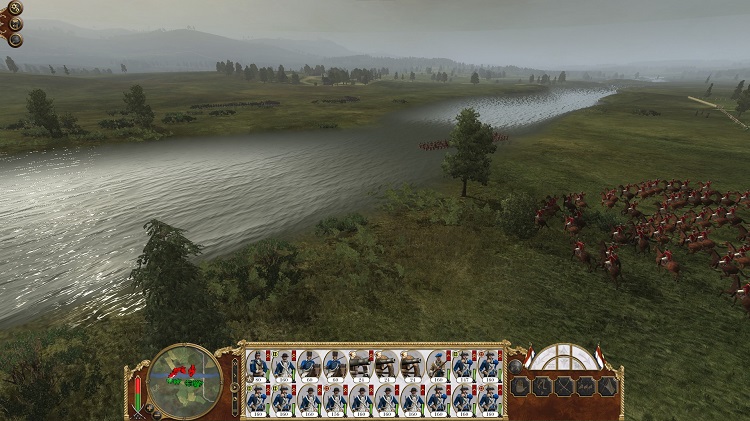
Attacking through a river was always a dangerous prospect, making it an excellent natural defensive point.
 The first battle, the Polish forces attempted to charge their way through with the famed winged lancers. A technologically ancient formation, the winged hussars went into battle wearing heavy armour, long, medieval style jousting lances, and great wing shaped ornamentation that could be used to identify from hundreds of yards. They rode into battle on powerful, heavy horses adorned with some armour. These were the same knights that had pushed their way through the Prussian lines, and were one of the few remaining cavalry formations that could shatter their way through line infantry if they arrived unmolested.
The first battle, the Polish forces attempted to charge their way through with the famed winged lancers. A technologically ancient formation, the winged hussars went into battle wearing heavy armour, long, medieval style jousting lances, and great wing shaped ornamentation that could be used to identify from hundreds of yards. They rode into battle on powerful, heavy horses adorned with some armour. These were the same knights that had pushed their way through the Prussian lines, and were one of the few remaining cavalry formations that could shatter their way through line infantry if they arrived unmolested.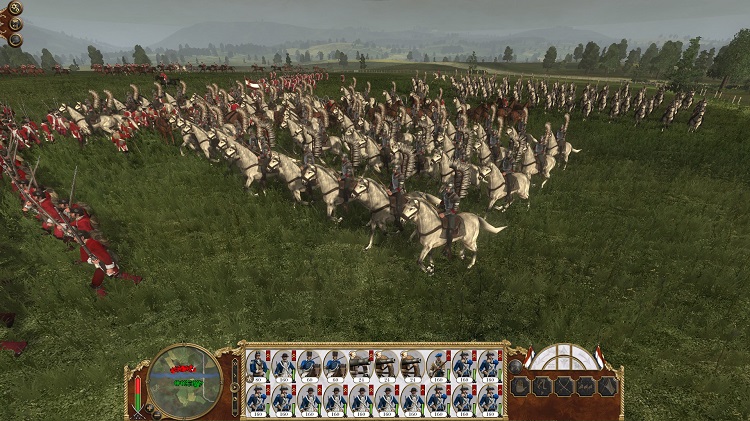
The famous Polish winged hussars. A throwback of the olden days of powerful cavalry charges.
 However, the Prussians were not the same as the Dutch. The Dutch, prepared along both a narrow fording point and bridge along the Danube river were positioned to ensure the winged hussars would not arrive intact. The Polish forces had brought two batteries of artillery, but one was a howitzer, which was not supplied with explosive shells or quick lime shells. This meant the Dutch, who had three batteries of artillery, organized along one side could force the Polish forces across the river.
However, the Prussians were not the same as the Dutch. The Dutch, prepared along both a narrow fording point and bridge along the Danube river were positioned to ensure the winged hussars would not arrive intact. The Polish forces had brought two batteries of artillery, but one was a howitzer, which was not supplied with explosive shells or quick lime shells. This meant the Dutch, who had three batteries of artillery, organized along one side could force the Polish forces across the river.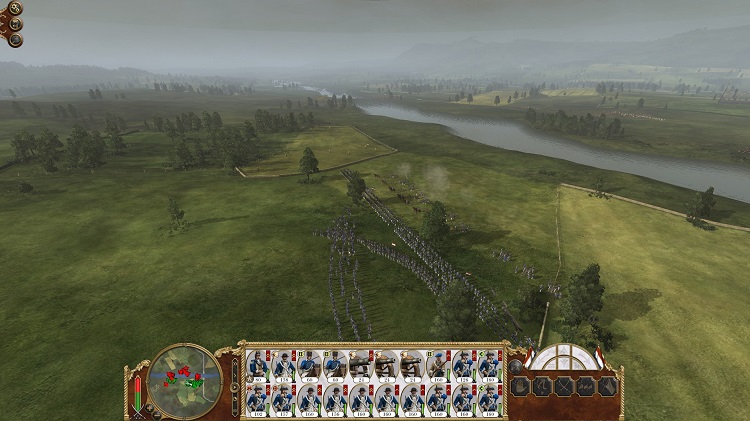
The Dutch were deployed in a single battery which could reach both crossing points.
 And it was in these opening volleys that the Dutch demonstrated the risk one ran when they relied on heavily armoured elite cavalry in the modern military age. The initial shots were levelled at the Polish winged hussars, killing dozens of them. This forced the cavalry back, waiting in the rear while the infantry arranged themselves.
And it was in these opening volleys that the Dutch demonstrated the risk one ran when they relied on heavily armoured elite cavalry in the modern military age. The initial shots were levelled at the Polish winged hussars, killing dozens of them. This forced the cavalry back, waiting in the rear while the infantry arranged themselves.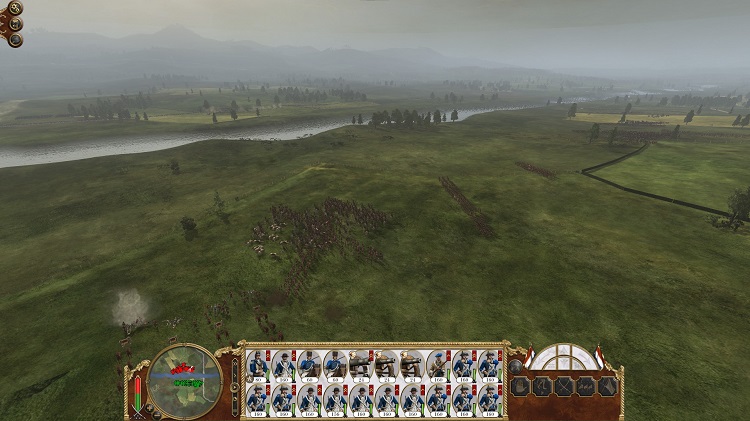
A cannon shot plows through the winged hussars. Armour was no proof against cannon fire, and the cannon of the age was far more accurate than it had been in medieval times.
 They wouldn’t wait long however. The Polish uhlan cavalry and their infantry had attempted to make a break across the fording point, trying to make their way through slow shallow water to arrive in the Dutch lines. The winged hussars attempted to move forward behind, the less valuable cavalry screening them from the gunfire. However, this meant their famous charge was nullified as their allies blocked their straight pathway into the Dutch infantry.
They wouldn’t wait long however. The Polish uhlan cavalry and their infantry had attempted to make a break across the fording point, trying to make their way through slow shallow water to arrive in the Dutch lines. The winged hussars attempted to move forward behind, the less valuable cavalry screening them from the gunfire. However, this meant their famous charge was nullified as their allies blocked their straight pathway into the Dutch infantry.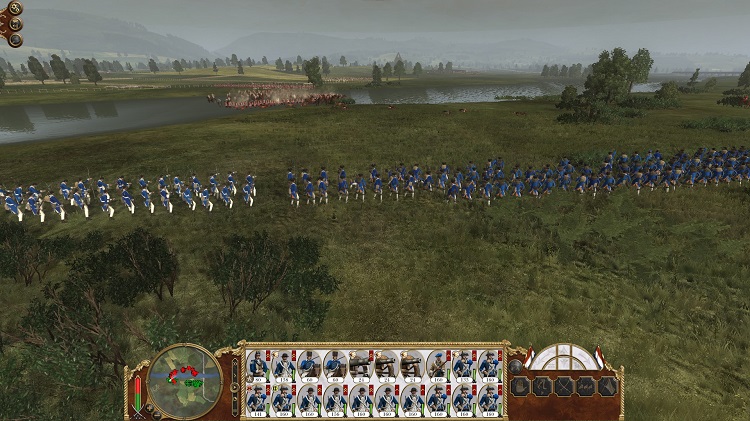
The Dutch couldn't fire their shots at the deadly winged hussars, but at the very least, their shots were far from wasted.
 The Dutch had been arrayed in a concave around the river crossing at both the ford and the bridge, meaning the Polish forces were surrounded by fire as they crossed. Even though the first wave fell, the winged hussars and several other battalions made it across, forcing the Dutch into squares in a few points. While the esteemed Polish cavalry were causing tremendous casualties to the Dutch, without their powerful charge and already at half their numbers from cannon shot, even they could not break the Dutch squares.
The Dutch had been arrayed in a concave around the river crossing at both the ford and the bridge, meaning the Polish forces were surrounded by fire as they crossed. Even though the first wave fell, the winged hussars and several other battalions made it across, forcing the Dutch into squares in a few points. While the esteemed Polish cavalry were causing tremendous casualties to the Dutch, without their powerful charge and already at half their numbers from cannon shot, even they could not break the Dutch squares.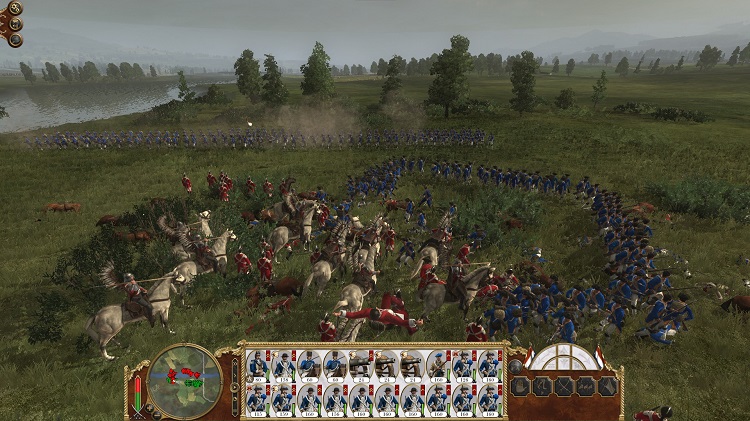
A Dutch square receives a charge from the winged hussars. The cavalry managed to push the corner in, but as the men moved back in arrangement, the cavalry were pushed away.
 The Dutch had also covered the Bridge, where another regiment of Polish foot attempted to make their way across. The Dutch that they encountered were more than a match, and unlike the bloody river crossing, the bridge force was gunned down without accomplishing anything. This left the Dutch reserves, held in the center directly by their artillery battery, free to move in the aid of the river crossing.
The Dutch had also covered the Bridge, where another regiment of Polish foot attempted to make their way across. The Dutch that they encountered were more than a match, and unlike the bloody river crossing, the bridge force was gunned down without accomplishing anything. This left the Dutch reserves, held in the center directly by their artillery battery, free to move in the aid of the river crossing.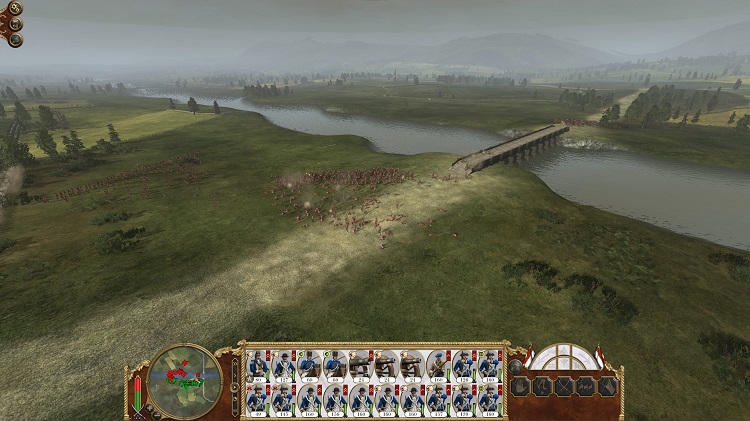
The Polish attempted another simultaneous crossing at the bridge.
 By the time the reserve force had arrived, the first wave of Dutch defenders had beaten back most of the Polish army, but the Polish guard and several battalions of line remained. Engaged in a deadly melee, the Dutch eventually managed to encircle the separate pockets of resistance. Surrounded, the Polish forces broke, and tried to make for the river, escaping back into their own territories.
By the time the reserve force had arrived, the first wave of Dutch defenders had beaten back most of the Polish army, but the Polish guard and several battalions of line remained. Engaged in a deadly melee, the Dutch eventually managed to encircle the separate pockets of resistance. Surrounded, the Polish forces broke, and tried to make for the river, escaping back into their own territories.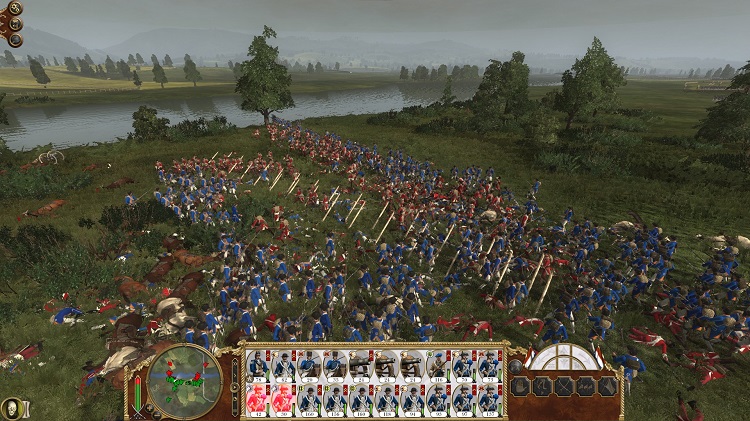
The Polish guard are surrounded.
 Their second assault came a year and a half later, attempting to cross slightly east of their previous landing. This assault had hoped, rather erroneously that the Dutch would not reinforce such an out of the way army force when they were maintaining such strength in their strong points along the front. They were wrong. The Dutch had more than adequate funds to keep their army at full strength. The new Polish assault was weaker than the first had been.
Their second assault came a year and a half later, attempting to cross slightly east of their previous landing. This assault had hoped, rather erroneously that the Dutch would not reinforce such an out of the way army force when they were maintaining such strength in their strong points along the front. They were wrong. The Dutch had more than adequate funds to keep their army at full strength. The new Polish assault was weaker than the first had been.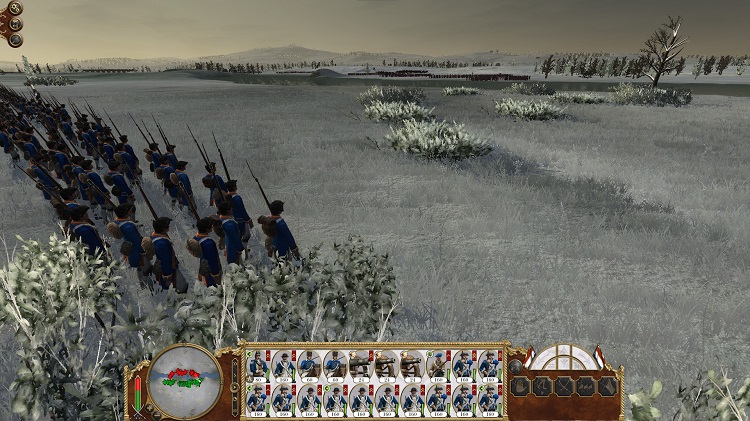
A replenished and refreshed battalion of Dutch line. Well prepared to take on the Polish force once more.
 The Dutch prepared themselves much as they had before, arranging their cannon into a single, powerful battery that would force the Polish forces across. This would prevent the Polish from using their own extremely limited artillery to force the Dutch across. The Dutch had also hoped to eliminate the winged hussars once more, the military emblems making wonderful looted trophies, but the Polish had reserved them in the North to fight the Prussians. Throwing them against the Dutch seemed a futile gesture.
The Dutch prepared themselves much as they had before, arranging their cannon into a single, powerful battery that would force the Polish forces across. This would prevent the Polish from using their own extremely limited artillery to force the Dutch across. The Dutch had also hoped to eliminate the winged hussars once more, the military emblems making wonderful looted trophies, but the Polish had reserved them in the North to fight the Prussians. Throwing them against the Dutch seemed a futile gesture. If the last battle had been a victory, the second was a massacre. The Dutch forces had deployed their men along the crossings in concaves to surround the Polish as they moved across the river, and much more confident, did not have men in reserve, hoping to defeat the Polish in a single powerful blow.
If the last battle had been a victory, the second was a massacre. The Dutch forces had deployed their men along the crossings in concaves to surround the Polish as they moved across the river, and much more confident, did not have men in reserve, hoping to defeat the Polish in a single powerful blow.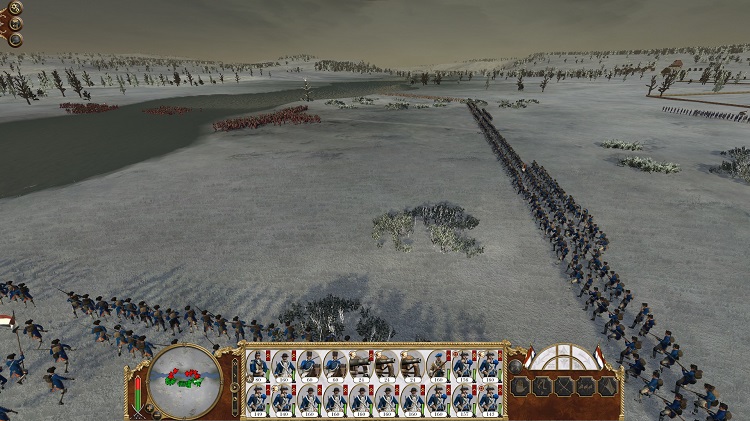
The Dutch defensive position relied on overwhelming anyone that attempted to get across the river rather than holding a reserve. This made their line arrangement far stronger.
 As the Polish forced their way across the bridge, they found themselves so jammed together as they tried to cross that some shots were killing more than one man, and their front lines were falling at a terrific rate. Some of the Polish near the front attempted to flee to the back, pushing into the troops behind that were still trying to push to the fore. Many were cut down facing behind.
As the Polish forced their way across the bridge, they found themselves so jammed together as they tried to cross that some shots were killing more than one man, and their front lines were falling at a terrific rate. Some of the Polish near the front attempted to flee to the back, pushing into the troops behind that were still trying to push to the fore. Many were cut down facing behind.
The Polish forces attempting to cross the bridge. A few men would slip past the choke point and desperately charge the Dutch lines, but lacking numbers, were cut down.
 Eventually, the Polish managed to get a few men across, and unable to stay in the constant barrage of fire from all sides, charged directly ahead. A final, suicidal charge. They were quickly run down by the slightly bemused Dutch soldiers as they tried to retreat back across the bridge, finding themselves bottlenecked at the crossing.
Eventually, the Polish managed to get a few men across, and unable to stay in the constant barrage of fire from all sides, charged directly ahead. A final, suicidal charge. They were quickly run down by the slightly bemused Dutch soldiers as they tried to retreat back across the bridge, finding themselves bottlenecked at the crossing.
The Polish finally manage to cross on mass, but broke on contact.
 On their other flank, the pass was slightly more open. However, the Dutch could fire as the men attempted to cross the river. Slowed by the water, the Polish forces were once again demolished by the Dutch. Still, with more men, the Polish managed to make their way across, forcing their way into melee against the left flank of the Dutch concave.
On their other flank, the pass was slightly more open. However, the Dutch could fire as the men attempted to cross the river. Slowed by the water, the Polish forces were once again demolished by the Dutch. Still, with more men, the Polish managed to make their way across, forcing their way into melee against the left flank of the Dutch concave.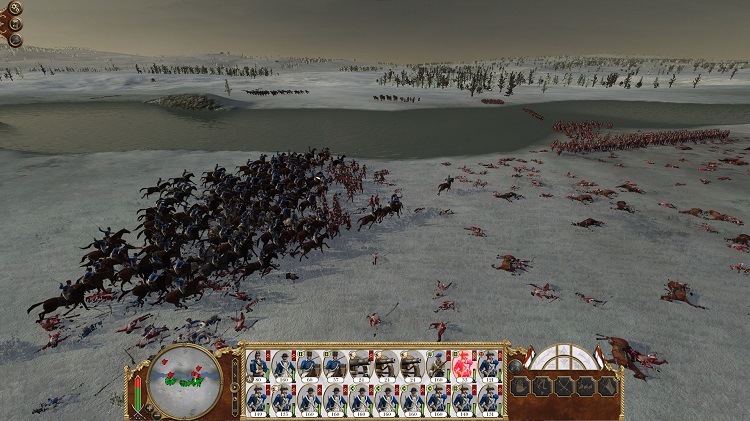
The other river crossing was far more hard pressed. The Dutch reinforced that flank by charging their cavalry into the fray.
 With horrendous losses, they even managed to push their way through, forcing the Dutch to move troops around to plug the gap, but once they had, keeping the Polish forces in the enfilade, the Polish army quickly retreated from the field, and were forced to make their way back to Warsaw. It was becoming clear the Dutch were not going to allow a breakthrough from the front lines.
With horrendous losses, they even managed to push their way through, forcing the Dutch to move troops around to plug the gap, but once they had, keeping the Polish forces in the enfilade, the Polish army quickly retreated from the field, and were forced to make their way back to Warsaw. It was becoming clear the Dutch were not going to allow a breakthrough from the front lines.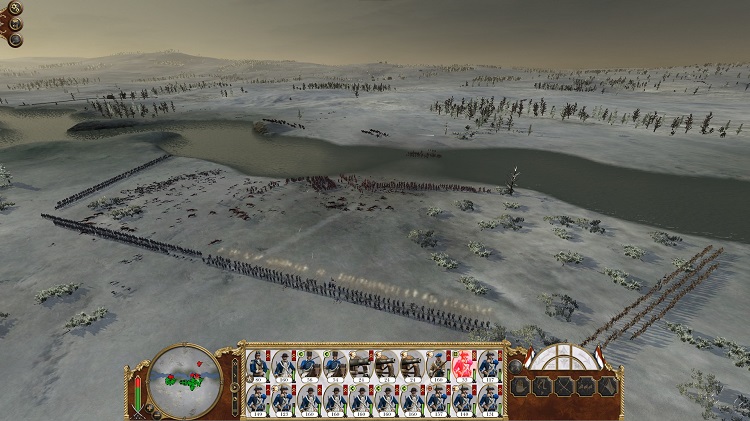
a line of dead could be seen marking where the initial left flank had fallen, but the Dutch stretched their lines across to cover the gap. Still caught and surrounded by Dutch fire, the Polish army broke.
 The Polish however, were unopposed along the East of the Prussian territories. With no Prussian armies along that front, and with the Dutch busy protecting the provincial capitals, the Polish were able to burn down and raid factories, farms and other industries, dramatically reducing the income of the Prussians. In doing so, they even further slowed the reconstruction of the Prussian forces, and incurred even greater costs on them as they were forced to repair those facilities.
The Polish however, were unopposed along the East of the Prussian territories. With no Prussian armies along that front, and with the Dutch busy protecting the provincial capitals, the Polish were able to burn down and raid factories, farms and other industries, dramatically reducing the income of the Prussians. In doing so, they even further slowed the reconstruction of the Prussian forces, and incurred even greater costs on them as they were forced to repair those facilities.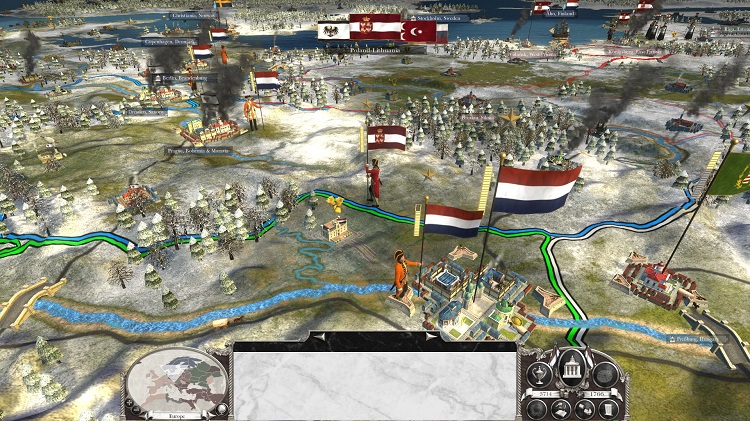
The Dutch could forestall a breakthrough of the Polish forces all across the front, but they still pillaged and burned much of the land around.
 Even with all the turmoil, none of it was in the Western Atlantic Federation’s territory. The Dutch and their many holdings were becoming more and more productive by the year, and none of their own territories were at risk of invasion.
Even with all the turmoil, none of it was in the Western Atlantic Federation’s territory. The Dutch and their many holdings were becoming more and more productive by the year, and none of their own territories were at risk of invasion. In Britain however, the British were still a persistent threat. While a thousand troops were sent from Scotland to Ireland, the Dutch had quelled a potential uprising there, but a riot had already occurred in Cork. Partly because of the occupation, but more pressingly because the local football field had been taken over as a secured munitions dump, it being the closest thing to a safe place to store high explosives.
In Britain however, the British were still a persistent threat. While a thousand troops were sent from Scotland to Ireland, the Dutch had quelled a potential uprising there, but a riot had already occurred in Cork. Partly because of the occupation, but more pressingly because the local football field had been taken over as a secured munitions dump, it being the closest thing to a safe place to store high explosives.
Cork City Football Club. Across much of Britain, football, is of tremendous importance.
 London was a more serious issue however, with the English trying to arm themselves across the countryside. The remnants from the battle of York, and their artillery were still unaccounted for, and the British had prepared for both defeat and an armed resistance. While they had hoped for a few more years of protracted battle to prepare, artillery and powder was hidden around the countryside, granting the English the means to fight back. With the guard in London however, victory was an unlikely prospect.
London was a more serious issue however, with the English trying to arm themselves across the countryside. The remnants from the battle of York, and their artillery were still unaccounted for, and the British had prepared for both defeat and an armed resistance. While they had hoped for a few more years of protracted battle to prepare, artillery and powder was hidden around the countryside, granting the English the means to fight back. With the guard in London however, victory was an unlikely prospect.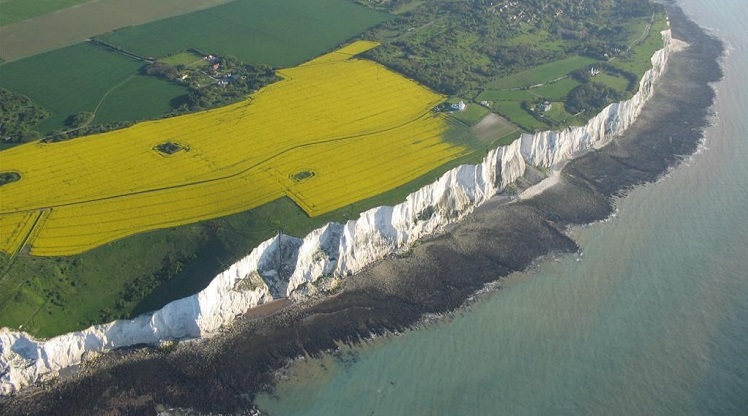
Much of the powder was stored along the cliffs of Dover. The Dutch patrols didn't care to check too carefully down the cliff at the shore, and it was easier to make a barrel appear both white and a natural part of the topography from sea against the white cliffs. A grey barrel on a grey cliff side appeared far more obvious, and was often detected from sea.
 The first uprising would come in 1768 around Cambridge. Nobles who had arranged themselves in the guard cavalry leading farmers and peasants against the Dutch were about to move to retake London, or to vandalize the entire countryside to force the Dutch to pay the cost of repairs, but when the Dutch had heard word of them, Ruysch was quick to move rather than waiting around London.
The first uprising would come in 1768 around Cambridge. Nobles who had arranged themselves in the guard cavalry leading farmers and peasants against the Dutch were about to move to retake London, or to vandalize the entire countryside to force the Dutch to pay the cost of repairs, but when the Dutch had heard word of them, Ruysch was quick to move rather than waiting around London.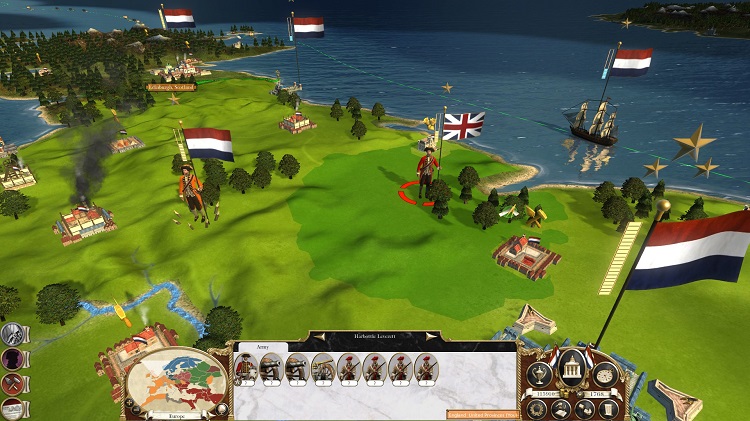
The British manage an uprising near Cambridge.
 The first Cambridge rebellion was put down when Ruysch came into mortar range of the rebels. His regiments of horse had reported on their position, and with spotters atop the hill, began to bombard the English before they even knew they were fighting. Shells blew apart artillery and battalions from beyond the range of retaliation, forcing the British to prepare an advance.
The first Cambridge rebellion was put down when Ruysch came into mortar range of the rebels. His regiments of horse had reported on their position, and with spotters atop the hill, began to bombard the English before they even knew they were fighting. Shells blew apart artillery and battalions from beyond the range of retaliation, forcing the British to prepare an advance.
The Dutch had prepared from behind a hill, and so the rebels did not know how many Dutch were arrayed against them.
 At this stage, the British could not very well retreat their forces. While under that constant bombardment from the Dutch artillery, they would certainly take losses if their army remained cohesive as it marched away, and the Dutch cavalry would certainly overtake the rebel’s artillery. With this in mind, the British guard ordered the peasants to advance.
At this stage, the British could not very well retreat their forces. While under that constant bombardment from the Dutch artillery, they would certainly take losses if their army remained cohesive as it marched away, and the Dutch cavalry would certainly overtake the rebel’s artillery. With this in mind, the British guard ordered the peasants to advance.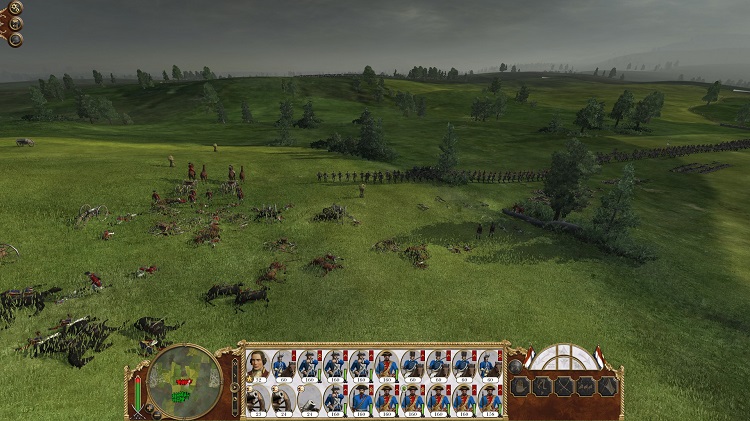
The Dutch artillery counter battery destroys the rebel artillery.
 Confused, terrified by the explosions and approaching the Dutch guard, the British militia kept advancing and retreating. The guard managed to rally them every time they broke, but they fled again the instant they came into musket range against the guard, and every time they waffled back and forth, they took casualties.
Confused, terrified by the explosions and approaching the Dutch guard, the British militia kept advancing and retreating. The guard managed to rally them every time they broke, but they fled again the instant they came into musket range against the guard, and every time they waffled back and forth, they took casualties.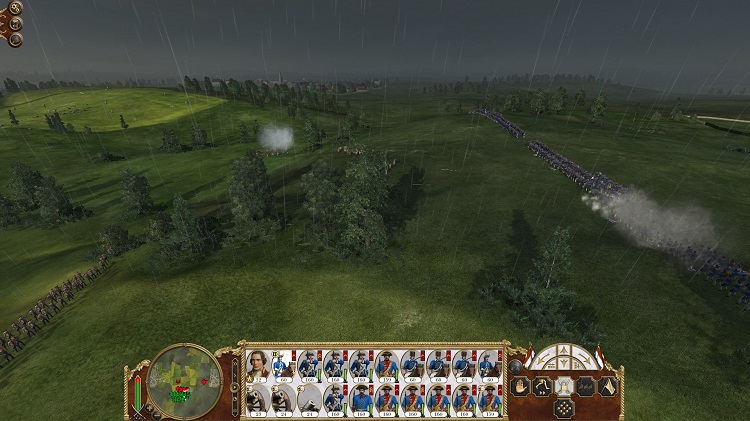
The militia encounter the Dutch as they crest the hill. Terrified by the accurate, steady fire, they retreated, but spurred on by the guard, the British rallied and tried to attack them once more.
 Eventually, the guard, sick of the farcical performance of the militia charged up the hill only to find more battalions of guard over the crest. As they made their way above it, the British nobles were gunned down, only a few making it into melee, but once there, they were in poor numbers and were promptly pulled off their horses and killed. They had been the only force keeping the militia on the field, and with their death, the remaining British peasants retreated, melding back in with the population at large.
Eventually, the guard, sick of the farcical performance of the militia charged up the hill only to find more battalions of guard over the crest. As they made their way above it, the British nobles were gunned down, only a few making it into melee, but once there, they were in poor numbers and were promptly pulled off their horses and killed. They had been the only force keeping the militia on the field, and with their death, the remaining British peasants retreated, melding back in with the population at large.
The Dutch are charged by the British guard. As the guard is gunned down, and the last few retreat, the English retreat the field, throwing down their guns and returning to their homes, pretending they had nothing to do with it.
 Still, even with the first rebellion put down, the Dutch knew the British were simmering with discontent and a rebellious attitude. While the capture of London had won the Dutch the British isles, the Britons intended to make them earn their keep.
Still, even with the first rebellion put down, the Dutch knew the British were simmering with discontent and a rebellious attitude. While the capture of London had won the Dutch the British isles, the Britons intended to make them earn their keep. Next we will be listening to a live performance of music by Richard Wagner followed by world news. If you want news of the current war in the Middle East please channel in to BBC radio 1. David Stephenson will be presenting more on the 80 years war in 3 days.
Next we will be listening to a live performance of music by Richard Wagner followed by world news. If you want news of the current war in the Middle East please channel in to BBC radio 1. David Stephenson will be presenting more on the 80 years war in 3 days.